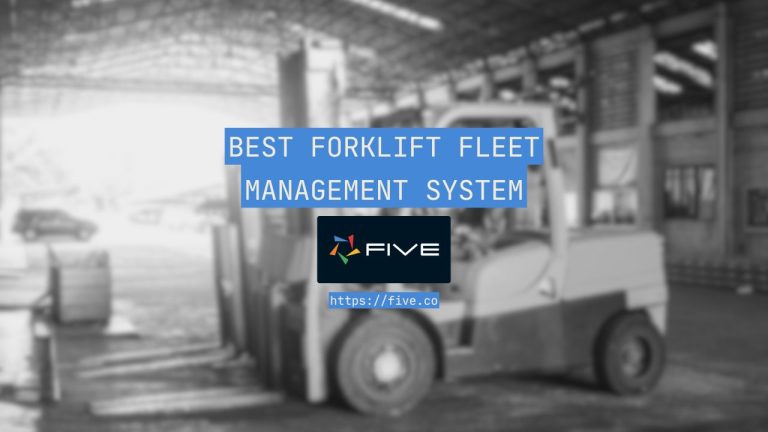Best Library Catalog Systems for 2025
Here’s Our Comprehensive List of The Top Library Catalog Systems
Managing a modern library’s collection requires sophisticated tools that go far beyond basic cataloging. Whether you’re running a public library, academic institution, school media center, or special collection, today’s libraries face unprecedented challenges in managing diverse materials while meeting patron expectations for seamless digital experiences.
Thankfully, modern library catalog systems offer comprehensive solutions for these complex demands. This guide examines the top library catalog systems available in 2025, based on extensive evaluations and feedback from librarians, information specialists, and library administrators across various institutional settings.
Why Modern Library Catalog Systems Are Essential
Today’s libraries need more than basic catalog software. Why? Because libraries now manage so much more than just books. They handle physical books, e-books, digital archives, videos, and sometimes even objects for lending—from tools to musical instruments. Each of these needs its own special treatment.
So what makes a good library catalog system worth investing in? The benefits are clear:
- One System for Everything: Manage all your physical and digital resources in one place
- Better Patron Experience: Give library users a simple, intuitive way to find what they need
- Save Staff Time: Automate everyday tasks from buying new materials to removing old ones
- Smarter Decisions: Use real data to guide your collection choices and budget spending
- Connect Your Community: Build stronger relationships between people and library resources
Each of these features helps transform how libraries work, turning separate, disconnected systems into one smooth operation that works for everyone.
The Top Library Catalog Systems
1. Five’s Integrated Library System (ILS)
Best for: Libraries of all sizes looking for an easy-to-use cloud solution without the technical headaches
Let me tell you why Five’s ILS tops our list. It gives you all the powerful features you’d expect from high-end systems, but without the usual complexity. What’s really impressive? Libraries tell us they can fully switch to this system in just weeks, not months—even when they have thousands of items!
Key Features
- Everything in one place: Manages your physical books, e-books, and digital collections all together
- Works from anywhere: Since it’s all in the cloud, you can access it from any device with internet
- Helps you make smart decisions: Comes with ready-to-use reports plus options to create your own
What really sets Five apart is how it grows with you. Smaller libraries love its clean, straightforward interface. Larger institutions appreciate how smoothly it handles growing collections and changing needs. Best of all? You don’t need to be a tech wizard to use it, just basic library skills will do.
Five’s Ready-To-Use Library Catalog System
Access our fully featured, scalable Library Database Application and professionalize your library management. The application is cloud-hosted and can be accessed from any device (desktop, tablet and mobile), anywhere and at any time. There is no hardware cost, no installation or maintenance burden. All that is needed to access the system is an Internet connection.
2. Koha ILS
Best for: Libraries that want open-source flexibility and a system shaped by librarians, not corporations
Koha has become the world’s favorite open-source library system for good reason. It’s constantly improving thanks to its dedicated community of users who help develop it. With over 20,000 libraries using it across 120 countries, you get both rock-solid reliability and fresh innovation. However, since it’s open-source and doesn’t come as a hosted solution, you’ll need to handle the technical intricacies of running the system such as setting up a Linux server and SQL database.
Key Features
- It’s completely free: Being open-source means no ongoing license fees eating into your budget
- Follows all the standards: Fully supports MARC21, Z39.50, SIP2, and all those technical standards you need
- Make it truly yours: You can access and modify the source code to fit your unique local needs
- You’re never alone: Join an active global community with regional user groups and regular meetups
- Freedom of choice: Work with support partners you choose or manage everything in-house
- Perfect for multiple locations: Includes powerful tools for managing several branches together
What really makes Koha stand out is who’s behind the wheel. Instead of corporate executives deciding what features to prioritize based on profit, Koha’s development is driven by actual librarians and what they need. This means even small libraries get high-end features without the high-end price tag.
Koha does a fantastic job balancing traditional library processes with what modern patrons expect. Its catalog interface (OPAC) is intuitive and easy to search, while still maintaining all the detailed organization that librarians need. And since it’s built with responsive design, it looks great whether your patrons are using computers, tablets, or phones.
3. Alma by Ex Libris
Best for: Academic libraries juggling complex e-resources and serious research materials
Alma has become the go-to choice for academic libraries trying to manage today’s complicated scholarly resources. It handles print materials, electronic resources, and digital collections all in one unified system. That’s why over 2,000 academic and research institutions worldwide have chosen it.
Key Features
- Everything flows through one system: Manage all types of materials with a single, consistent process
- Complete e-resource handling: Tools for managing licenses, activating access, and analyzing usage
- Smart data insights: Powerful analytics help you make evidence-based collection decisions
- Works well with others: Built-in features for sharing resources between different institutions
- Connects to everything: Extensive APIs let you integrate with other campus systems easily
- Superior academic search: Primo discovery layer is specifically designed for research needs
Alma really shines when dealing with the complex world of scholarly resources. It doesn’t just handle basic access to electronic materials—it manages detailed license information, predicts usage patterns, and automates the entire lifecycle from initial evaluation through renewal or cancellation.
You can tell Alma was designed by people who truly understand how academic libraries work. It supports specialized functions like course reserves, scholarly communications, and special collections while connecting seamlessly to other campus systems like learning management platforms and research databases.
4. Follett Destiny Library Manager
Best for: School libraries needing curriculum connections and kid-friendly interfaces
Follett Destiny has grown from a basic catalog into a complete ecosystem built specifically for schools. It focuses on connecting library resources to curriculum and providing interfaces that work for students of all ages. That’s why it’s the top choice for K-12 libraries, with over 75,000 schools worldwide using it.
Key Features
- Connects to classroom learning: Tools that link library resources directly to learning standards
- Made for young users: Interfaces designed specifically for different age groups, from little kids to teens
- Works across whole districts: Central management with customization options for individual schools
- Everything digital in one place: Easy connections to e-books, databases, and online resources
- Boosts reading programs: Built-in support for Accelerated Reader, reading challenges, and literacy initiatives
- Handles textbooks too: Optional add-ons to track textbook inventory and distribution
Destiny helps transform school libraries from just places to store books into dynamic learning hubs. Its Resource Manager feature creates direct connections between library materials and what’s happening in classrooms. This helps librarians become essential partners in teaching, not just keepers of the books.
The system is also serious about making sure all students can access library resources. It includes screen reader compatibility for visually impaired students and reading level indicators to help match kids with just-right books. These tools create truly inclusive library services that support all the different ways students learn.
How to Choose the Right System for Your Library
With so many great options out there, how do you pick the right one? Let me break it down into three simple questions to help you find your perfect match:
1. How big is your collection (and how fast is it growing)?
- Small libraries (under 25,000 items): Koha and Five gives you all the features you need without overwhelming complexity
- Medium libraries (25,000-250,000 items): Five’s ILS offers comprehensive features in a manageable package
- Large libraries (over 250,000 items): Alma provides the powerful tools needed for massive collections
- Future growth: Don’t just think about today—where will you be in 5-7 years? Plan ahead to avoid changing systems
2. What kinds of materials do you manage?
- Mainly physical books and materials: Koha handles traditional library materials beautifully
- Mix of physical and digital: Five’s ILS balances both worlds equally well
- Mostly e-resources: Alma offers the most sophisticated electronic resource management
- Unique collections: Look for systems with special modules for things like archives, media, or objects
3. What does your library need to connect with?
- We’re self-contained: Koha works perfectly as a standalone system
- We need campus/enterprise connections: Alma has the strongest APIs for connecting to other systems
- We use other educational products: Follett Destiny works seamlessly with other school tech platforms
- We share resources with other libraries: Five’s ILS and Alma both excel at consortium support
Choosing the Right Library Catalog System
If you’re looking to modernize your library while making things better for both staff and patrons, today’s catalog systems offer amazing possibilities. For most libraries, Five’s Integrated Library System hits the sweet spot, it’s powerful yet easy to use, and it adapts to libraries of all types and sizes.
The right system turns fragmented library operations into one smooth-running ecosystem. In today’s digital world, these systems help libraries stay relevant, responsive, and central to their communities.
Five’s Ready-To-Use Library System
Access our fully featured, scalable Library Database Application and professionalize your library management. The application is cloud-hosted and can be accessed from any device (desktop, tablet and mobile), anywhere and at any time. There is no hardware cost, no installation or maintenance burden. All that is needed to access the system is an Internet connection.
Frequently Asked Questions About Library Catalog Systems
What exactly is a library catalog system?
A library catalog system is specialized software that helps libraries manage their collections and services. It’s the digital backbone of modern libraries, handling everything from tracking books and resources to managing patron information and facilitating searches. Think of it as the operating system that keeps your entire library running smoothly.
Do small libraries really need a catalog system?
Yes, even small libraries benefit enormously from the right catalog system. The key is choosing one that fits your size and needs. A good system saves time, reduces errors, improves patron service, and helps you make better decisions about your collection. Plus, many systems (like Koha) offer free options that work great for small libraries.
How much does a library catalog system typically cost?
The cost varies dramatically based on the system and your needs:
- Open-source options like Koha are free to use, though you might pay for support or hosting
- Small to mid-sized library systems might cost $5,000 annually
- Large academic or public library systems can range from $30,000 to several hundred thousand dollars per year
Remember to factor in initial implementation costs, annual maintenance, and potential add-on modules.
Can we keep our existing data when switching to a new system?
Yes! All the good systems offer data migration pathways. This is actually one of the most important parts of choosing a system. Ask specifically about their experience migrating from your current system, what the process looks like, and how they handle data cleanup during migration – Five’s system can handle this really well.
Do we need special hardware to run these systems?
Most modern library systems are cloud-based (like Five), so you don’t need special servers on-site. You’ll need reliable internet and computers for staff and patron access. Even better, cloud-based systems mean your staff can access the system remotely when needed (like during a pandemic!).
How do these systems handle different types of materials beyond books?
Today’s systems are designed for diverse collections. They can catalog and track almost anything: e-books, audiobooks, journals, music, films, maps, archival materials, and even physical objects like tools or art. The better systems let you customize metadata fields for each material type.
What about integration with other systems we use?
This is a crucial question to ask before choosing a system. Most modern catalog systems offer APIs (ways for different systems to talk to each other). Ask specifically about integration with your authentication system, e-resource providers, finance system, learning management system, and any other key platforms you use.
How long does it take to implement a new catalog system?
Implementation timelines vary based on the system’s complexity and your library’s size:
- Small libraries: 1-3 months
- Medium libraries: 3-6 months
- Large libraries or consortia: 6-12+ months
The process includes data migration, configuration, testing, staff training, and go-live support.
How disruptive is switching to a new system?
There will be some disruption, but good planning minimizes it. The key phases are:
- System setup and configuration (happens in the background)
- Data migration testing (minimal impact)
- Staff training (requires staff time commitment)
- Go-live period (typically 1-2 weeks of adjustment)
Most vendors will help you create a transition plan that minimizes service interruptions.
What ongoing maintenance does a catalog system require?
Cloud-based systems handle most technical maintenance for you. Your staff will need to:
- Learn about new features when updates are released
- Periodically review and update system settings
- Conduct occasional data cleanup
- Refresh training for new staff members
How will a new system affect our patrons?
A good catalog system improves the patron experience with better search capabilities, more self-service options, personalized recommendations, and easier access to digital resources. Some initial adjustment might be needed, but most users adapt quickly—especially if the new system is more intuitive than your old one.


